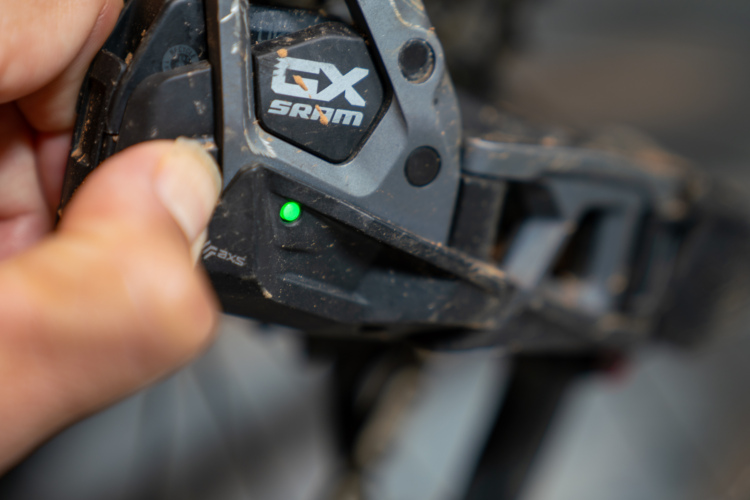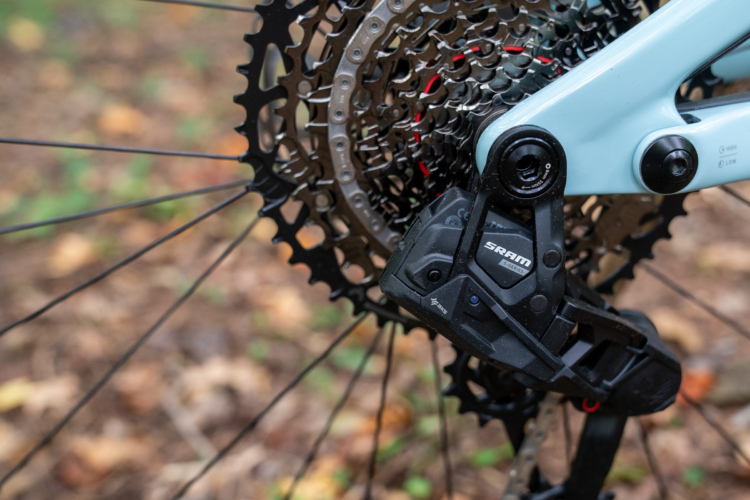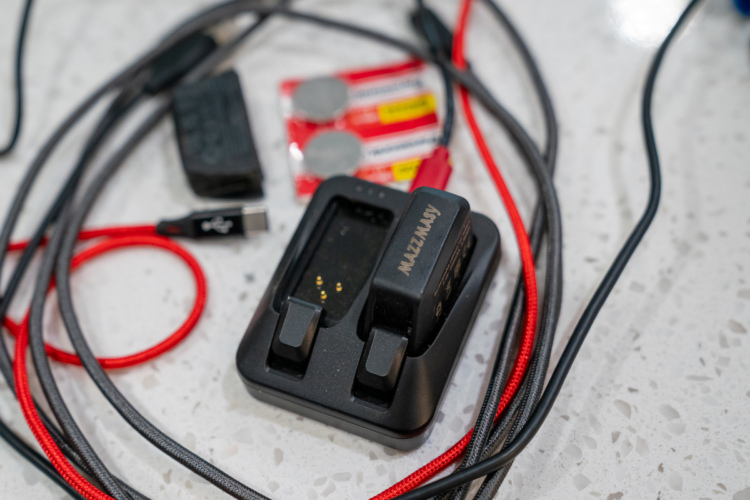
2025 marks the tenth anniversary of SRAM’s release of wireless electronic shifting with the announcement of the RED eTap for road bikes. Less than four years later, the brand announced two new wireless mountain bike groupsets: the XX1 Eagle AXS and the X01 Eagle AXS.
Prior to that, Shimano introduced its electronic shifting, Digital Integrated Intelligence (Di2), in 2009. This, too, was first introduced as a road groupset, but the technology would eventually make its way to mountain bikes in 2014. While Di2 wasn’t “wireless,” it too ditched mechanical shifting for electronic, albeit wired.
These milestones mark the beginning of Singletracks’ readers sharing strong thoughts, feelings, and opinions on the drivetrain matter.
And we’ve been here for the ride, reviewing products, sharing opinions, and receiving feedback. Whether it’s SRAM AXS, SRAM Transmission, or Shimano electronic shifting, we have found that readers are passionate about the electronic vs. mechanical debate.
Comments
That passion is clearly demonstrated in riders’ comments. Whether on Singletracks or on social media, hundreds of you let us know how you feel about electronic drivetrains.
And, as you may have guessed, the price of electronic systems has been a huge talking point.
In an Instagram post from January 2025, we asked why riders had yet to use electronic shifting. The post received 220 comments (and counting), many regarding the cost of electronic drivetrains.
Several commenters asked if we would be the ones “paying” for and “funding the upgrade.” Another commented, “Have electronic in one of my bikes and completely love it but costs are why I don’t have it on my other bike.”
And then there were others who made their position very clear. “Electric shifting is a waste of time and money and more plastic junk in the landfill. Nobody needs electronic shifting,” wrote one enthusiastic cable-actuated user.
Besides the high price tag, many also mentioned the lack of noticeable performance upgrades from mechanical to electronic shifting. Even during the early days of electronic shifting, readers were questioning the cost relative to performance benefits. In a first-ride impression article of Shimano’s XTR Di2 drivetrain in 2014, musikron commented, “Another solution to a problem that does not exist. These bike companies are getting a little ridiculous in their fleecing of our wallets.”
Many other commenters on social media and on Singletracks mentioned how much slower electronic shifting, specifically SRAM wireless shifting, is compared to mechanical. Of course, another big reason is that, as Frank191 put it, “I don’t want to have to think or worry about a battery on my bike.”
While many of the comments favor keeping cables, others disagree. On the same Instagram post, one commenter engages with another, defending the reliability, precision, and “hassle-free” qualities of electronic shifting.
“Unless they change something fundamental in the way it works, I went AXS in 2020 and don’t see a need to use anything else,” one commenter said.
Another commenter compared wireless shifting to first riding with a dropper post, saying, “It’s like a dropper post, thought it was a waste of time until I had one, can’t live without it now. Wireless shifting is brilliant.”
Regardless of performance or preference, most comments were against electronic shifting and its elitist, high cost. “People with money to burn will find a way to justify it no matter what,” one commenter said. “They are more concerned with impressing people than anything else.”

Surveys
If the comments seemed to lean toward our readers disliking the idea of electronic shifting, our surveys balanced the scales.
Our surveys have always been a great way to gauge the Singletracks audience’s opinions on different mountain bike industry issues. A question is posed, response options are provided (including a “tell us in the comments” option), and the data is tallied.
And thousands of you have responded. The results from one of our latest surveys in August 2024 show that half of our responding audience have electronic shifting — 47% wireless and 3% wired — on at least one of their bikes.
These surveys on electronic shifting have also demonstrated the rising popularity of the new technology. The same survey mentioned in the above paragraph was released a year earlier, in July 2023, where only 44% of respondents indicated that they had electronic shifting. However, this 44% is undoubtedly an increase from the 36% who called electronic shifting a “game changer” in May 2021.
And why wouldn’t it be? Electronic wireless shifting, like SRAM Transmission is reliable, durable, shifts under load, and has relatively inexpensive replacement parts despite a high initial cost. Yet, not all of you sing that same tune.
If our surveys on electronic drivetrains demonstrate that half of our (responding) audience likes electronic shifting, they also show that a large portion doesn’t. The same poll mentioned above showed the second-largest responding group clicked, “No, and I’m not interested in electronic shifting.”
Strong words.
We ended 2024 by asking which trends you’d like to see die out in 2025. Options ranged from longer reaches to new standards to more electronics on your bike. Nearly 4,000 readers responded, with 800+ people (21%) voting to see the end of electronic shifting. This survey showed a trend against electronics in general, as 27% didn’t like electronic suspension controls, and 18% said “no” to wireless dropper posts.
The only “electronic” to receive a higher vote than those three was a 28% vote against eMTBs.
Of course, we need to know why. Was it purely a dislike of charging batteries, a performance issue, or something else? So, we put up a survey.
Over 5,000 readers responded to a January 2025 survey asking why they aren’t using electronic shifting. “Price” was at the top, with 41% of the votes. A SRAM Transmission drivetrain costs anywhere from $1,000 to $2,000, depending on which one you get. You can save some money with a SRAM AXS groupset but can still expect to pay $600 to $800.
More bikes are specced with electronic shifting
Despite the high prices, we are seeing an increasing number of bikes specced with electronic shifting. What was perhaps once considered a luxurious upgrade is now commonplace on a mountain bike.
And you’ve recognized this trend. In the previously mentioned survey, we asked why you aren’t using electronic shifting. Over 800 respondents said they were waiting until they got their next bike.
The trend of more bikes being equipped with electronic shifting is particularly evident in e-bike build kits. Both the SRAM Transmission drivetrain and the e-bike have been rising in popularity simultaneously. Transmission’s durability and ability to shift under load make it a perfect partner for the torque an e-bike can produce.
That said, more acoustic bikes are being specced with wireless shifting, too, and certain brands are eliminating the option of mechanical shifting altogether. The top carbon models of the new Stumpjumper 15 have no cable ports for mechanical shifting, forcing wireless. The same applies to some CC-carbon Santa Cruz bikes, like the Bronson.
As you can imagine, the lack of a mechanical shifting option raised many eyebrows among our readers. Regarding the Stumpy 15, Vincent_e commented, “I will need to test one of these at some point, but until they add cable ports to the carbon frame, it’s a total non-starter.”
Fortunately, mechanical routing is available on the Bronson C frames. Mechanical routing is also on the new Stumpy 15, but only on alloy models.
So, what about you? Have you ditched cables? Do you love the durability and ease of SRAM Transmission? Or do you love mechanical drivetrains’ precise, crisp, and quick shifting?
More than ten years later, the debate continues.











6 Comments
4 hours ago
4 hours ago
The advantages are easier setup and a cleaner design not have cables at the bar and rear derailleur. Admittingly, both systems work great but I do prefer the electronic shifting over the mechanical shifting.
3 hours ago
1 hour ago
0 minutes ago
I'll repeat here what I've said every time this discussion has come up. There is nothing wrong with electronic shifting as concept. However, its current form, both from a cost at purchase, the e-waste problem, and its locking a user into a ecosystem that is expensive to replace derailleurs, its best for those in the more professional side of cycling. Or those that have more money than sense.
I do think there is a bit of chicken & egg issue here. MTB media is focusing all their praise on electronic shifting because, well, it pays the bills. (SRAM ain't buying ad space if you say their new electronic groupset isn't needed by 90%+ of riders.) Then a certain number of their most committed readers/watchers get electronic shifting. Then said MTB media does a survey and wouldn't you know it, X% of riders are on electronic groupsets, so now they have to talk about how their so popular. Rinse and repeat.
By the way, that "racer gear for everyone" cycle is how we ended up in the current mess with bicycle prices. I'm sorry, but the MTB media is helping to make MTBing a "too expensive for me" sport for a lot of Americans by focusing on the boi racer and enthusiast market.
18 minutes ago